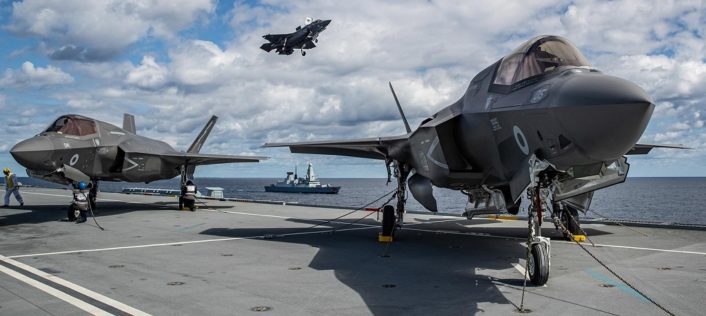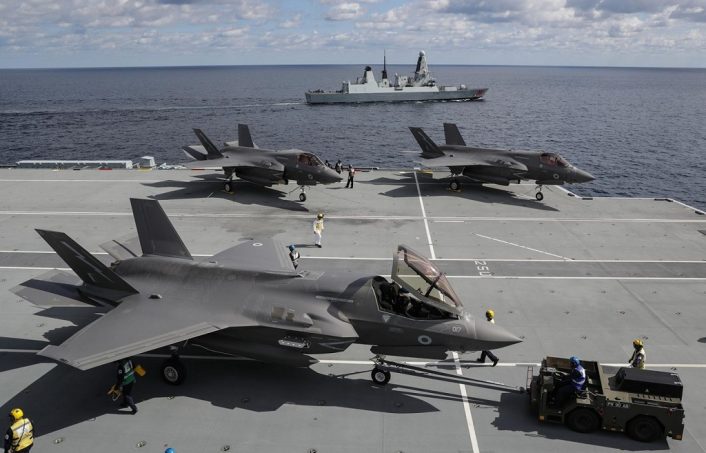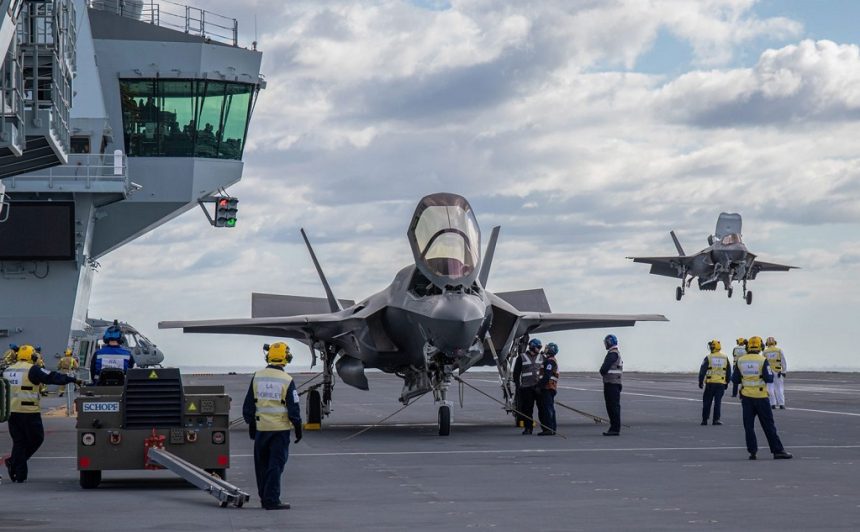It’s the first time British jets land on a British aircraft carrier since the retirement of the Harrier GR9 in 2010
The United Kingdom’s Ministry of Defence announced on Oct. 13, 2019, that British F-35B Lightnings (that’s not a misspell, UK actually adopted the “Lightning” designation instead of the “Lightning II” used by all other nations) landed for the first time on the new HMS Queen Elizabeth aircraft carrier, which is currently sailing off the US East Coast for the “Westlant 19” Carrier Strike Group deployment.
The Operational Test 1, as dubbed on a patch circulating among the carrier’s crew, comes after the first test in 2018 with USMC F-35s and it’s meant to test personnel and aircraft to ensure they are compatible with the carrier. Four F-35s are currently involved, of which one, operated by 17 (Reserve) Test and Evaluation Squadron (TES), arrived from Edwards AFB and three, operated by the UK Lighting Force, arrived from RAF Marham.
We suddenly have a lot of people wearing these roaming the decks (mostly looking a bit lost….) what could this possibly mean??? #WESTLANT19 #UKF35 #bigdecksfastjets @OC617Sqn @RAF_Marham @17SqnRAF
⚡️ is forecast……. pic.twitter.com/J6O98WQ0Pm
— HMS Queen Elizabeth (@HMSQNLZ) Oct. 10, 2019
The 3 aircraft, prepared by @OC617Sqn, @OC207Sqn and Lightning Team UK personnel, will be deployed for a number of weeks to take part in WESTLANT 19 pic.twitter.com/Hug0m4PYKq
— RAF Marham (@RAF_Marham) Oct. 9 2019
Noteworthy, RAF Marham’s F-35s are using new modex codes based on the airframe construction code provided by Lockheed Martin. The aircraft deployed, seen in the photos, are ZM148 (BK-14) modex 014, ZM149 (BK-15) modex 015, ZM151 (BK-17) modex 017. Previously ZM151 was seen sporting the modex 151 when arrived to RAF Marham earlier this year.
This deployment represents the first time a British fighter jet operate from a British aircraft carrier since the retirement of the Harrier GR9 in 2010, when a formation of four jets took off for the last time from the HMS Ark Royal aircraft carrier. The Ark Royal was also retired the following year, leaving the Royal Navy without an aircraft carrier capability until the HMS Queen Elizabeth was commissioned in 2017.

According to the MoD, the tests during “Westlant 19” “involve mission planning, arming the aircraft using the ship’s Highly Automated Weapon Handling System, flying missions and debriefing on completion.” The trials will be led by 17 TES, which is a joint Royal Air Force – Royal Navy Squadron since it stood up at Edwards AFB in 2013, alongside personnel from the Lightning Force, as stated in the official release. The Lightning Force is currently made of the 207 Squadron and 617 Squadron but, interestingly, only the latter is mentioned in the deployment’s patch.
Wing Commander Adam Curd, Officer in Command of 17 Squadron, was the first to land aboard the aircraft carrier and this was also his first landing ever on a carrier: “This is the first time I have landed onboard an aircraft carrier – for it to be HMS Queen Elizabeth, and in an aircraft as amazing as a UK Lightning, is quite something. This is a proud moment not only for me, but the wider team that has brought us to this milestone for maritime aviation and UK Defence.”

Since the delivery of the first F-35B, the UK and US worked closely together to develop future Carrier Strike Group, as stated by Rear Admiral Martin Connell, Assistant Chief of the Naval Staff for Aviation and Carrier Strike of the Royal Navy: “Embarking UK Lightning jets in HMS Queen Elizabeth for the very first time is a major milestone for Royal Navy and Royal Air Force aviation and for our development of the 5th generation Carrier Strike Group capability. Once again, the support from our US Navy and US Marine Corps colleagues in the United States has been incredible and undoubtedly helped bring us to this moment: making maritime aviation history.”
The UK is planning to declare an Initial Operating Capability for the Carrier Strike Group by the end of 2020, with the first operational deployment of HMS Queen Elizabeth in 2021 embarking F-35s from RAF 617 Squadron and from a USMC F-35B squadron.








